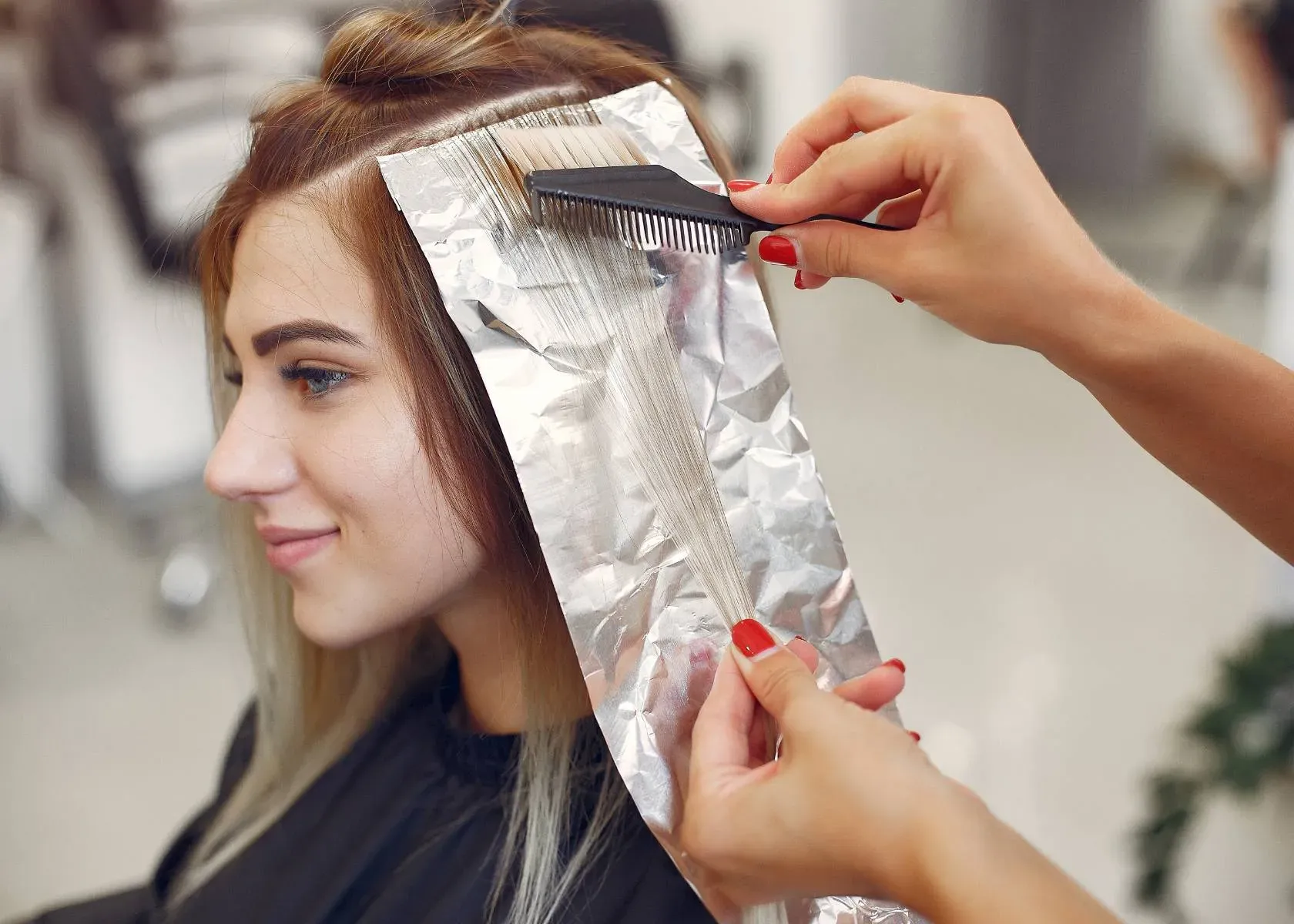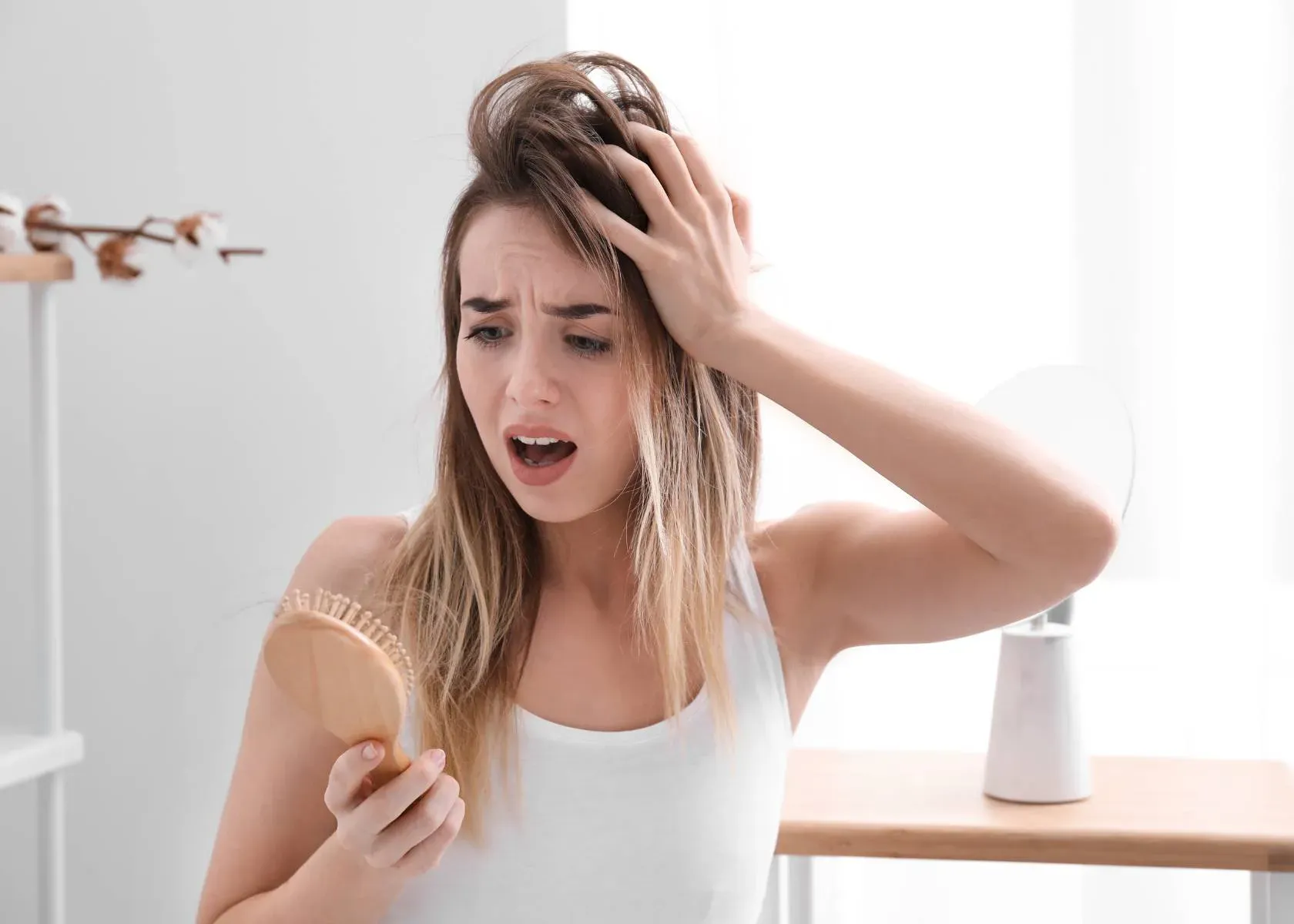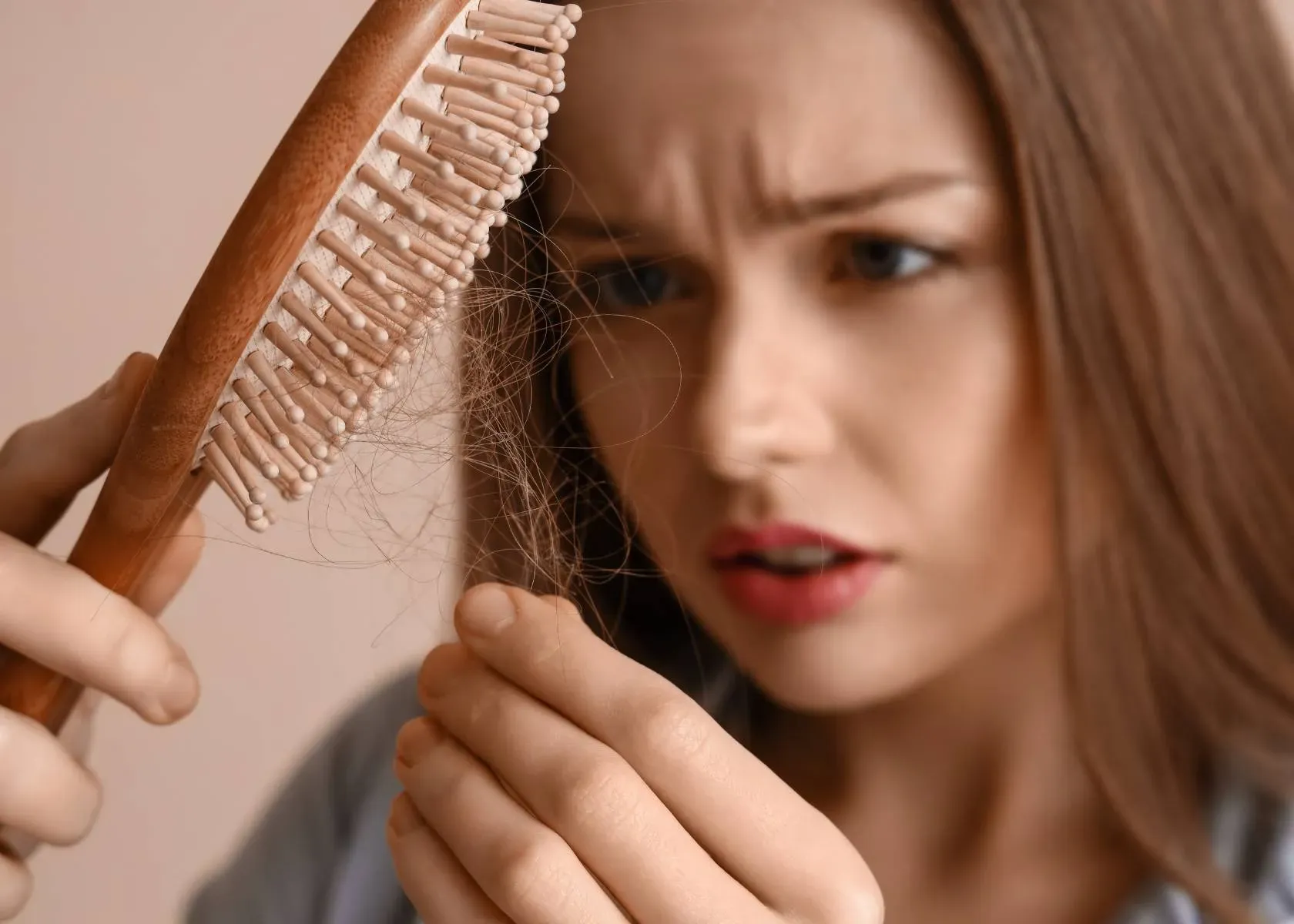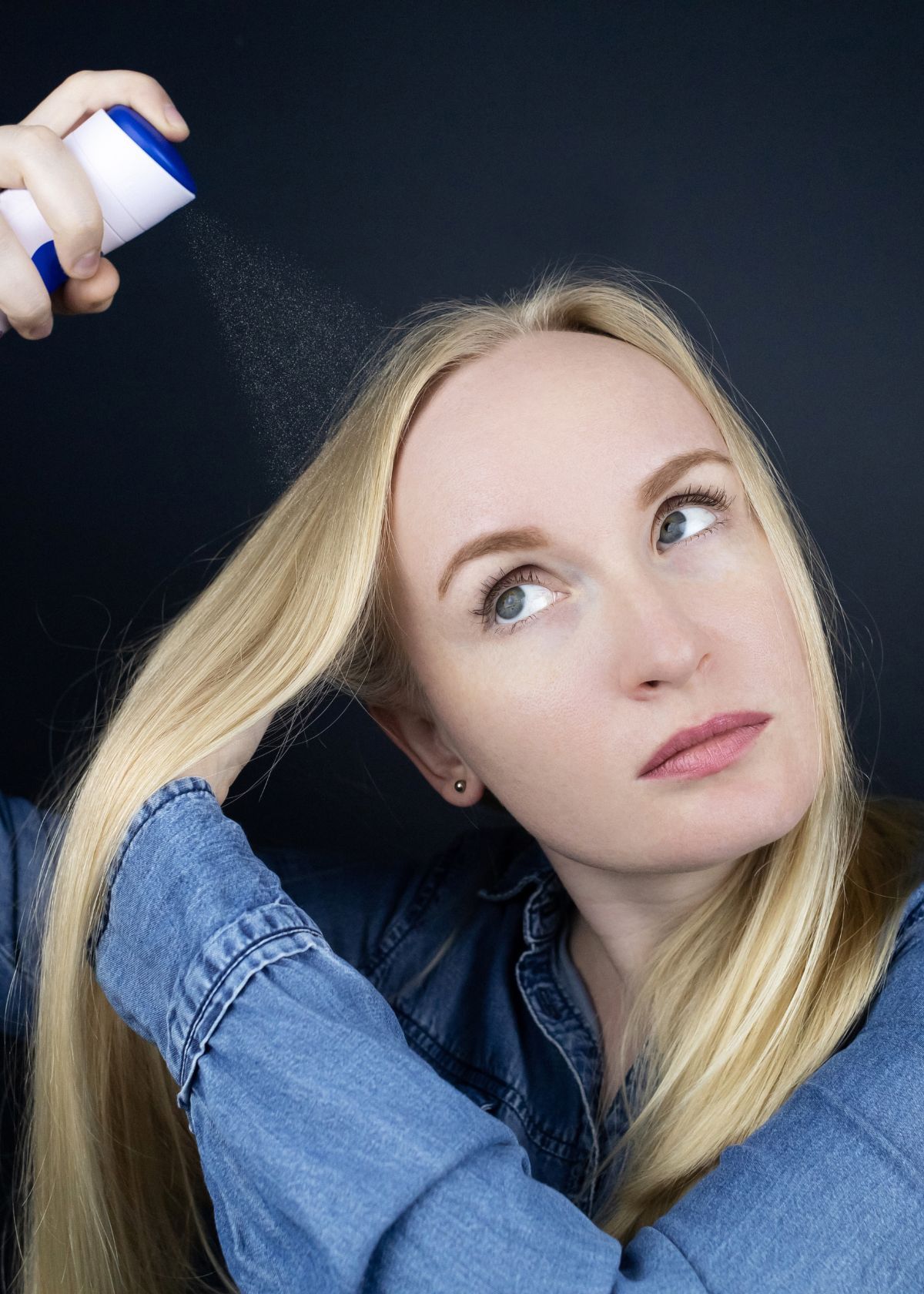Do you feel a pang of worry every time you run your fingers through your bleached locks, fearing they are thinning? That's completely understandable. Diving deep into research and drawing from personal encounters, it's been discovered that bleach can rob your hair of essential proteins, making it seem thinner.
In this article, I am going to give you an in-depth look at how bleaching impacts the health of your strands and provide solutions to counter these effects. Are you ready to reclaim the lively bounce of your tresses? Then, let's get started.
Key Takeaways
- Bleaching your hair can lead to thinning due to the loss of fatty acids and protein.
- The bleaching process strips away essential components like lipids and keratin, making the hair weak and prone to hair breakage.
- Using deep conditioning treatments regularly can help restore moisture and strengthen bleached hair.
- Limiting heat styling and avoiding over-processing is key to preventing further damage and potential hair loss.
Understanding the Effects of Bleaching on Hair

Bleaching your hair can have detrimental effects on its health, as it leads to the loss of essential lipids, fatty acids, and keratin protein that provide strength and nourishment.
The bleaching agent raises the hair's outer cuticle to reach the cortex. When hair is washed, the chemical makes the hair lighter. If you want your hair healthy, think twice before using a hair color with a bleaching agent.
Loss of Lipids, Fatty Acids, and Keratin Protein
Bleaching takes a toll on hair by stripping it of its essential components - lipids, fatty acids, and keratin protein. These elements are vital for healthy hair as they offer structure, strength, and moisture.
Getting rid of them means your tresses will become weak, dry, and vulnerable to damage, such as breakages and split ends. Keratin protein, particularly, is the building block of hair strands.
Bleach breaks down these proteins, leading to thinning and weakening of the hair shafts, which can result in permanent harm if not properly managed.
Increased Risk for Hair Loss
Bleaching your hair can lead to an increased risk of hair loss. The bleaching process strips the hair of its natural lipids, fatty acids, and keratin protein, which are essential for strength and structure.
Without these components, the hair becomes weaker and more prone to breakage and thinning.
Bleached hair may appear thinner due to the damage caused by the bleaching agents, making it important to take precautions and use proper hair care techniques before and after bleaching to minimize the risk of permanent hair loss.
How to Protect Your Hair Before and After Bleaching?

To protect your hair before and after bleaching, use deep conditioning treatments regularly to restore moisture and prevent dryness.
Using Deep Conditioning Treatment
Deep conditioning treatments are essential for protecting and nourishing bleached hair. These treatments help to replenish lost moisture, repair damage, and restore the strength and elasticity of the hair strands. It is always recommended for thinning hair.
By focusing on deep conditioning regularly, you can minimize the dryness and brittleness that often accompanies bleaching. Deep conditioners penetrate deeply into the hair shaft, providing intense hydration and nutrients to revive weakened hair.
They also help to seal in the cuticles, preventing further breakage and split ends. Incorporating a hair and scalp treatment into your hair care routine will promote healthier, stronger hair that is less prone to thinning or loss after bleaching.
Limiting Heat Styling
Using excessive heat styling tools such as flat irons, curling wands, and blow dryers can contribute to hair damage and thinning, especially when combined with the effects of bleaching.
Heat can strip away the moisture from your hair, leaving it dry and prone to breakage. It's important to limit your use of heat styling tools or opt for lower temperatures when possible.
This will help minimize further damage and preserve the health of your hair.
Avoiding Over-Processing
To prevent excessive damage to your hair, it is essential to avoid over-processing. Bleaching the hair already strips away its natural oils and proteins, so subjecting it to additional chemical treatments can lead to further thinning and breakage.
By giving your hair a break from harsh processes like perming or relaxing, you can allow it time to recover and restore its strength. Instead, focus on nourishing your hair with deep conditioning treatments and using gentle styling techniques that minimize heat exposure.
Taking these precautions will help maintain the health of your hair and reduce the risk of permanent damage caused by over-processing.
Managing Temporary Hair Loss from Bleaching

To manage temporary hair loss from bleaching, it is important to be patient with regrowth and consult a professional stylist. You may want blue or green shades and that's why you want to bleach your hair.
However, I recommend you consult with a professional before using a hair dye or stable pigment molecules to get your hair bleached.
Patience with Regrowth
After bleaching your hair, it's important to have patience with the regrowth process. Hair loss from bleaching can be temporary, and with time, new hair follicles will start producing healthy strands again.
It may take some time for your hair to fully recover and regain its thickness. Remember that everyone's hair grows at a different rate, so be patient and give your scalp the time it needs to generate new growth.
Be gentle when handling your hair during this period to avoid any additional breakage or damage.
Consulting a Professional Stylist
To ensure the best care for your bleached hair and manage any temporary hair loss, it is highly recommended to consult a professional stylist. They have the expertise and experience to assess your hair condition, provide tailored advice, and recommend suitable treatments.
A professional stylist can help you determine the right products to use for nourishing your hair, suggest appropriate hairstyles that minimize damage, and guide you on how to properly maintain your bleached hair.
Don't hesitate to seek their assistance in managing any concerns or questions you may have about the health of your hair after bleaching.
Other Factors that May Contribute to Hair Loss

There are other factors besides bleaching that can contribute to hair loss, such as underlying conditions, genetics, and overall hair care routine.
Underlying Conditions
Sometimes, underlying conditions can contribute to hair loss or thinning. Certain medical conditions, such as hypothyroidism, hormonal imbalances, and autoimmune diseases, can affect the health of your hair.
Additionally, scalp conditions like alopecia areata or scalp psoriasis can also lead to hair loss. It's important to consult with a healthcare professional if you suspect an underlying condition may be causing your hair thinning or loss.
They can help diagnose and treat any potential health issues that may be impacting your hair.
Genetics
Genetics also play a role in hair loss and thinning after bleaching. Some individuals may be more genetically predisposed to having thinner or weaker hair, which can make them more susceptible to damage from the bleaching process.
This means that even with proper precautions and care, there may still be a higher risk of experiencing hair loss or thinning for those who have genetic factors at play.
It's important to recognize that while genetics can contribute to the overall health of your hair, taking steps like using conditioning treatments and limiting heat styling can help minimize the potential damage caused by bleaching.
Overall Hair Care Routine
To maintain the health and thickness of your hair, it is important to establish an overall hair care routine. This routine should include regular washing with a gentle shampoo suitable for your hair type.
Additionally, using a conditioner after every wash can help replenish moisture and improve the overall texture of your hair. It is also advisable to limit heat-styling tools like flat irons and curling wands, as excessive use can lead to dryness and breakage.
Moreover, incorporating deep conditioning treatments into your routine can provide extra nourishment and strengthen your hair against damage caused by bleaching or other chemical processes.
Frequently Asked Questions
In the following FAQs, I'll address how bleaching affects hair texture and volume based on my research and personal experience.
Does bleaching make your hair thin and cause hair loss?
Yes, excessive hair bleaching can lead to thinning and loss due to dry, brittle, and inelastic strands that break easily.
What's the effect of bleach on my hair growth?
Bleaching affects the health of your hair follicles, potentially slowing down the rate of your hair growth over time.
How does bleach cause damage to my hair?
Bleach causes long-term damage by making your hair dry and brittle which leads to increased rates of breakage after repeated treatments.
Can I recover from hair damage caused by bleaching?
Yes! Through proper maintenance using quality products aimed at restoring health, you can achieve recovery from bleach-induced damage.
What are some preventive measures against potential harm from bleaching my locks?
Minimizing the frequency of treatments and employing cautious styling methods lessens susceptibility to detrimental effects; moreover, investing in nourishing post-bleach care aids in maintaining good overall health for tresses.
Conclusion
Bleaching your hair can make it appear thinner due to the loss of fatty acids and protein. The damage caused by the bleaching process can also lead to dryness, brittleness, and breakage.
However, with proper care and precautions, you can minimize the negative effects of bleaching on your hair. Remember to use deep conditioning treatments, limit heat styling, and avoid over-processing your hair.
Consulting a professional stylist can also help in managing any temporary hair loss experienced after bleaching. Take steps to protect and nourish your hair for healthy growth and maintain its thickness.
Learn More About Bleaching Hair






